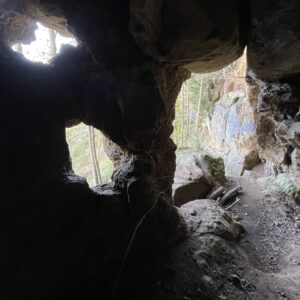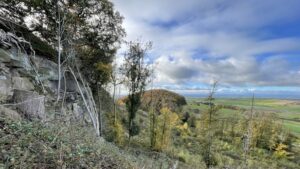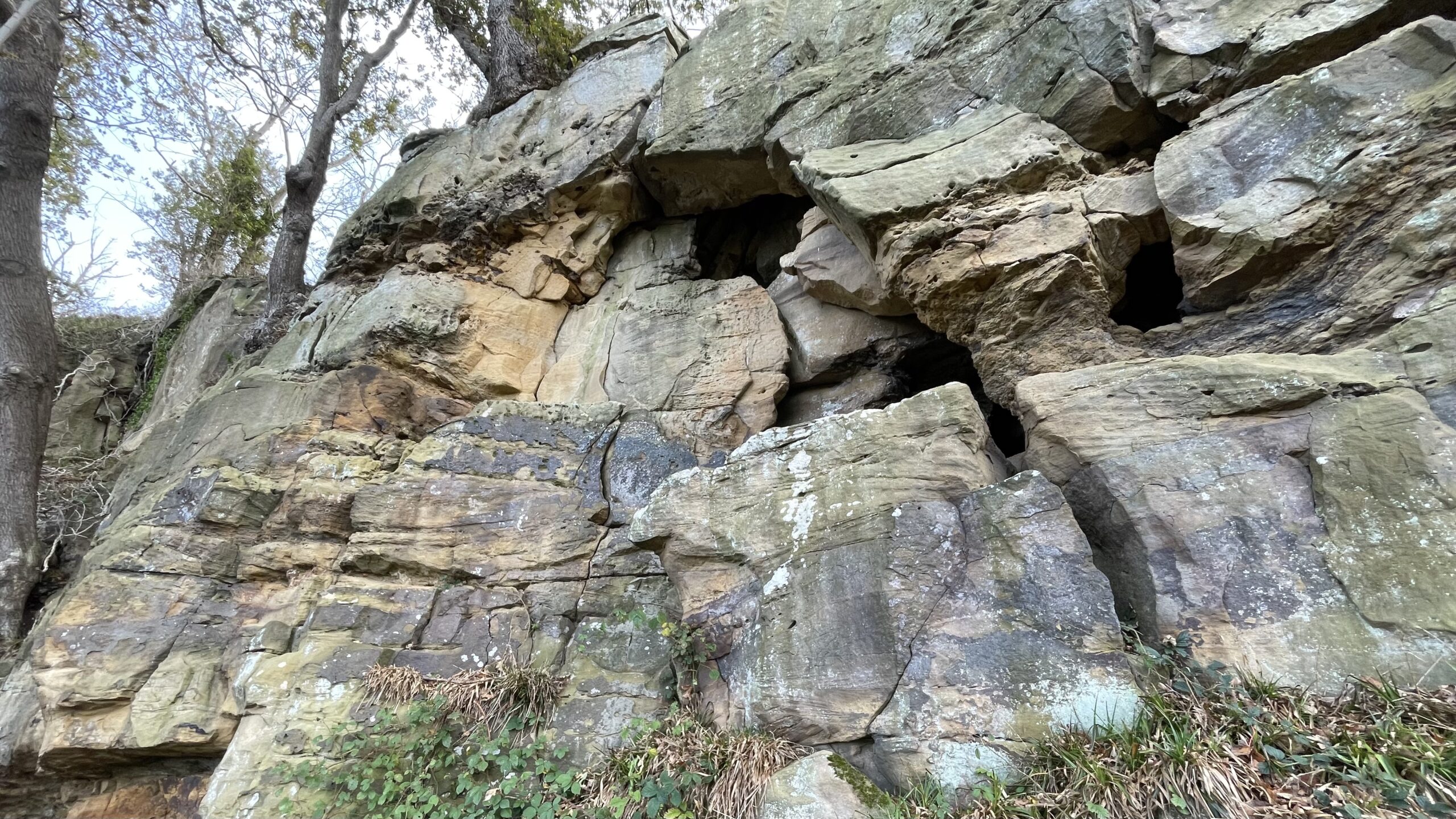High above the village of Over Silton, recent felling has exposed cliffs that rear up like the broken ramparts of some forgotten fortress, appropriately named The Scarrs. Here lies a cleft in the rock known as Hobthrush Hall. The locals call it a cave, though it feels more like the scar of something ancient and unsettled. Once, so they say, it was home to a goblin of uncommon spirit—a nimble creature said to leap with ease from his stony doorstep to the crown of Carlow Hill, half a mile across the valley1Grainge, William. The Vale of Mowbray: a historical and topographical account of Thirsk and its neighbourhood. Page 326. 1859..

Unlike the shadowy fiends said to haunt marsh and moor, Hob was a house-goblin of the old sort: a quiet helper, not a terror. His legend echoes those of Milton’s “drudging goblin,” who threshed corn by moonlight and vanished before dawn, leaving behind only the warmth of the hearth and the faint smell of toil.
Here in Over Silton, Hob attached himself to a man named Weighall, the keeper of the village inn and tenant of the land where Hobthrush Hall gapes still. Each night, while the villagers slept, the unseen hand of Hob would churn the cream set out for him, earning his simple reward—a generous slice of bread and butter, left by the hearth in gratitude. Morning always found the butter gone, the work done, and no sign of the spectral labourer.

But gratitude is a fragile thing. One night, through forgetfulness or folly, Weighall failed to leave Hob his supper. Insulted by the omission, the goblin abandoned his post and was never seen again. The churn stood idle, the cream unworked, and the cave fell silent.
Today, Hobthrush Hall remains—lonely, protected by a tangle of thorn and bramble—a raw wound in the cliff where the wind still mutters of betrayal, and the rain keeps time with the memory of a spirit who turned his back on man.
- 1Grainge, William. The Vale of Mowbray: a historical and topographical account of Thirsk and its neighbourhood. Page 326. 1859.

Leave a Reply